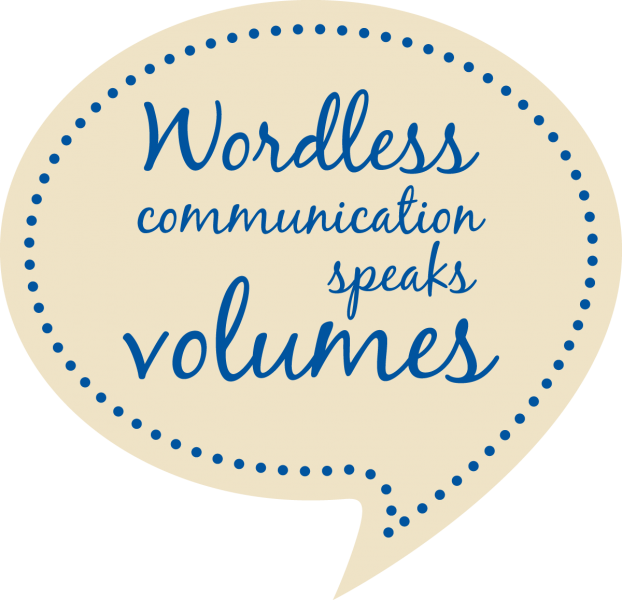- May 1, 2013
- Posted by: Hillary Feder
- Category: Company Engagement
Nothing says “strong company culture” like clear, frequent and consistent communication. The adage “It’s not just what you say, but how you say it” is more than a mouthful, because it acknowledges that communication is more than the spoken word.
Whether you’re giving a presentation, participating in a staff meeting or talking with a client, the goal of communication is always getting your audience to understand your messages the way you intended them to be understood.
When communicating in-person, multiple forces are at play. Body language and tone must support words to ensure your audience accurately interprets your messages. When these elements are out of sync, you convey mixed signals, which confuse, disconnect, and could even alienate your audience. “Muddying the water” sabotages credibility and gnaws at trust. At the very least, mixed signals make it extremely difficult to predict how others react to you.
How communication is received
It’s helpful to understand how people receive communication that includes emotion (feelings and attitudes) is received. Professor Albert Mehrabian describes this surprising break down in his book Silent Messages, which is based on his extensive research:
 Mehrabian’s research is particularly relevant to management and business, where motivation and attitude impact outcomes. Therefore, to ensure that communication supports cultural objectives, it’s essential for emotional content to be understood as intended.
Mehrabian’s research is particularly relevant to management and business, where motivation and attitude impact outcomes. Therefore, to ensure that communication supports cultural objectives, it’s essential for emotional content to be understood as intended.
Overcoming absence of visual and/or tone
Email, text, and phone are convenient forms of communication, but we’ve all experienced how the lack of visual signs (and tone in the written word) can cause confusion and unintended reactions when communication is emotionally driven.
Therefore, communicating sans vision and tone requires thinking twice about language and expression. Email is effective for sharing facts and details, such as decisions made or recapping action items, scheduling meetings, sharing documents, summarizing conversations. It is far riskier for communicating emotionally charged information.
Without tone of voice (inflection, emphasis, rate of speech, and pitch) to support the written word, recipients are left to their own interpretation. While the sender may italicize or bold a word or phrase for emphasis, the recipient may interpret it as sarcasm. The emergence and widespread use of emoticons like “smiley” faces and acronyms like JK (just joking) in email are tools to enhance clarification.
Syncing spoken language with body language
When non-verbal and verbal communication are out of sync, the listener typically chooses to “read” nonverbal because it’s a natural, unconscious way of conveying your true feeling and intentions. Body language simply reflects what’s going on inside of us.
When both types of communication are in sync, they forge greater rapport, trust and clarity. When they do not mesh, they generate tension, mistrust and confusion. The best communicators are not only sensitive to their own body language, but also to their listeners’ nonverbal cues.
Be conscious of how you communicate with wordless signals:
- Eye contact – Known as the windows to the soul, eyes often convey a more vivid message than words. The way you look at someone can communicate boredom, interest, hostility, attraction and more.
- Touch – Think about how a hand shake can be firm and strong or weak and limp; how a pat on the back can be reassuring or how a nervous tap on the shoulder can be annoying.
- Posture – What does an erect posture say vs. slouching with head down? Arms open and welcoming vs. tightly crossed over your chest?
- Space – Be conscious of physical space. Closeness can breed intimacy, yet being too close can create a feeling of infringement.
- Facial expression – This natural, nonverbal communication is universal—joy, sadness, anger, surprise.
- Gestures – Almost like reflexes, how you move your hands, the animation in your arms, snapping fingers or fidgeting with pens can enhance or detract from your messages.
Mastering non-verbal communication
Nonverbal communication is a powerful vehicle for connecting with others, channeling your messages, and shaping a solid foundation for your professional (and personal) relationships.
One of the best ways to gain the upper hand in nonverbal communication is to people-watch. Observe people on the bus, at the airport, grocery store and state fair. Notice how they act and react to each other. As you watch and get a sense of what is going on between them, you will strengthen your own observation skills, which will help you pick up physical cues in exchanges your involved in.
Closing the gap between how you think you communicate and how the listener actually receives your communication will enable you to communicate more clearly, increase rapport with your audience, and foster credibility and trust that supports the company’s culture and bottom-line.
We are problem solvers and innovators when it comes to shaping your business culture with strategic ideas. We’ll help you implement down-to-earth strategies that are aligned with your company objectives, brand, message and voice. Call us.
Toll free: 800-742-6800 In Minneapolis/St. Paul 952-933-8365 www.askhillarys.com
